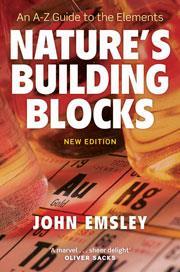Nature's building blocks: an A-Z guide to the elements
Nature’s building blocks: an A-Z guide to the elements (new edn)
John Emsley Oxford, UK: Oxford University Press
2011| 720pp | ?14.99 (PB)
ISBN 9780199605637
Reviewed by Simon Cotton

There is no political party that can unite such diversity within its membership as does the periodic table of the elements.
This book pulls off the remarkable feat of combining essential information on all the known chemical elements with facts on their role in living systems, the history of each element, its uses, and its environmental role, all in a most readable way. In other hands this could well be dull, but in the hands of John Emsley it is a joy to read.
Since the previous edition, three more elements (110-112) have received their official names (darmstadtium, roetgenium, and copernicium) and they duly receive their sections in the book. There is also a whole chunk of information on the transfermium elements. Some of the elements 113 (ununtrium) - 127 (unbiseptium) are unconfirmed, whilst others have been predicted; each of these gets a page too. There is a section on the history of the periodic table and an extensive bibliography.
If none of this comes as a surprise to you, turn to the Element of Surprise section at the end of each element. These are little snippets of surprising information.
I defy anyone to read this book without learning new facts. In my case it was that gallium (as well as antimony) expands on freezing and that vanadium was responsible for the prized properties of Damascene steel, famous amongst sword makers.
At a cover price that works out at about 2 pence per page, it is excellent value and is a highly recommended read.
RSC members can purchase this book direct from the publishers for a 25% discount on the RRP. See the member benefits link on this page.












No comments yet